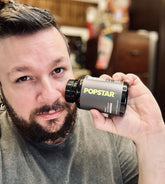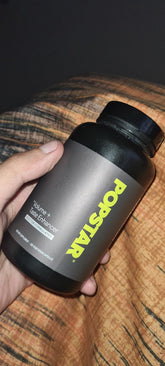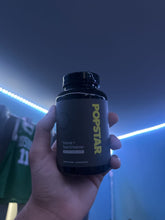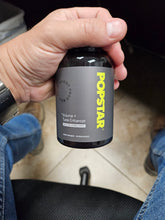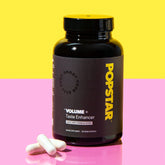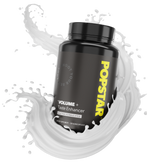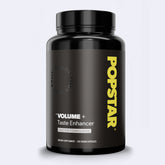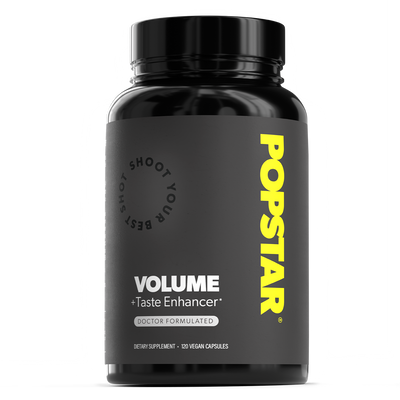Healthy semen typically appears in shades of white or grayish-white. However, some men may notice a yellowish tinge, raising questions about potential health concerns or lifestyle factors that could influence semen color. This article provides an in-depth look at the possible causes of yellow cum, key signs to watch for, and strategies to promote optimal reproductive health. Whether it’s a normal variation or a signal to consult with a healthcare provider, understanding the reasons behind yellow semen can empower you to make informed decisions about your well-being.
Table of Contents
- What Is Semen?
- Why Is Semen Sometimes Yellow?
- Possible Causes of Yellow Cum
- Lifestyle Factors That Influence Semen Color
- When to Seek Medical Attention
- How to Maintain a Healthy Semen Color
- Common Myths and Misconceptions
- FAQs About Yellow Cum
- Key Takeaways
- References
What Is Semen?
Semen is the fluid released during ejaculation, consisting of sperm cells suspended in a nutrient-rich liquid. This fluid originates from multiple glands within the male reproductive system, including the prostate gland, seminal vesicles, and bulbourethral glands. Each gland contributes different components—such as proteins, enzymes, and minerals—to support sperm health and encourage successful fertilization.
During ejaculation, sperm travels from the testes and mixes with other secretions. These secretions provide the essential nutrients and an alkaline environment for sperm to survive the acidic conditions of the vagina. Typically, semen’s color can vary from milky white to grayish-white—a sign of balanced composition. When semen appears yellowish, medical experts suggest looking at potential underlying causes that may or may not require intervention.
Besides its reproductive role, semen’s composition can hint at overall health. Factors such as hydration, diet, age, and lifestyle choices may affect its color and consistency. Minor fluctuations in semen’s appearance are common; however, notable changes warrant closer attention to ensure no underlying condition is present.
Why Is Semen Sometimes Yellow?
Yellow semen—or “yellow cum”—can be caused by an array of variables. It might be a benign change related to simple dietary factors such as consuming foods high in sulfur or using specific vitamins. However, it could also indicate a more serious issue, including infection or inflammation in the male reproductive tract. Understanding whether this discoloration is transient or persistent, accompanied by other symptoms, is crucial in determining if medical evaluation is necessary.
In certain cases, older sperm retained in the body longer than usual takes on a more yellowish hue when finally ejaculated. This situation can be entirely normal and non-hazardous. Yet, persistent or consistently dark discoloration, especially when coupled with pain, a foul odor, or noticeable discomfort, warrants closer examination. Your healthcare provider can guide you with specific tests—even specialized semen analyses—to decipher the root cause of yellow cum.
Ultimately, identifying the reasons behind occasional or chronic changes in ejaculate color helps individuals maintain optimal men’s health. Taking into account possible infections, lifestyle influences, or other factors can provide insights for better prevention and proactive care.
Possible Causes of Yellow Cum
1. Infections or Inflammation
A variety of infections can cause semen discoloration, leading it to appear yellow, greenish, or tinted. Bacterial infections in the reproductive or urinary tract—such as sexually transmitted infections (STIs) like gonorrhea or chlamydia—often generate pus, imparting a yellowish hue. Prostatitis (inflammation of the prostate gland) can alter the fluid’s color and consistency as well.
Infections typically include additional symptoms such as burning during urination, pelvic pain, or foul-smelling discharge. If you experience any of these indicators, it’s best to consult a healthcare provider for a proper evaluation and potential treatment, often involving antibiotics or other targeted therapies.
2. Presence of Urine
A small amount of urine can remain in the urethra and become mixed with semen during ejaculation, especially if men do not urinate before sexual activity. Urine contains pigments like urochrome, which has a yellowish tint. While small traces of urine usually cause very mild discoloration, larger quantities can create a notably yellow color.
In most cases, noticing that your semen is lightly tinted with yellow on rare occasions due to residual urine is not a serious concern. Staying well-hydrated and emptying your bladder before intercourse or masturbation often resolves this issue.
3. Diet and Supplements
The diet you follow can influence multiple bodily fluids, including semen. Foods rich in sulfurous compounds—like garlic, onions, or certain spices—may impart a yellowish tone when consumed in large amounts. Furthermore, high intake of certain vitamins or supplements (for instance, vitamins B and C) can also affect semen color.
Diet-related changes are generally harmless and tend to be short-lived. If the discoloration persists even after adjusting your dietary habits, it is advisable to consult a healthcare professional to rule out additional causes.
4. Dehydration
Dehydration can significantly affect the appearance of bodily fluids. Insufficient water intake increases the concentration of pigments in urine and can overlap with semen coloration. When a man’s fluid intake is low, the body conserves water, resulting in darker urine and potentially more yellow-tinged semen.
Replenishing bodily fluids by drinking adequate water daily helps maintain healthier bodily functions, including normal semen consistency and color. If you notice a return to a whiter or paler ejaculate after improving your hydration levels, it can confirm that lack of adequate fluid intake was the contributing factor.
5. Prostate Fluid Changes
The prostate gland produces prostatic fluid, a major component of semen. Changes or imbalances in prostatic fluid due to inflammation, infection, or benign prostatic hyperplasia can affect semen’s color. Chronic prostatitis, which might not present strong symptoms, can still influence the color by making prostatic fluid appear more yellow or cloudy.
Monitoring for pelvic pain, difficulty urinating, or discomfort during ejaculation in tandem with yellow semen is beneficial. Early detection and treatment of prostate issues can help eliminate the discoloration and other associated symptoms. A visit to a urologist might be recommended if these signs persist.
6. Abstinence or Stagnation
Men who go for extended periods without ejaculating may observe that their semen becomes slightly yellowish or clumpy. This happens as aging sperm cells accumulate in the reproductive tract. When eventually ejaculated, these older sperm cells can give the semen a more yellowish color. In most cases, this is a normal reaction of the body, but it’s helpful to remain aware of your body’s patterns.
7. Smoking and Substance Use
Inhalation of toxins from smoking cigarettes or marijuana, as well as the use of recreational drugs, can impact semen quality. Some men report changes in semen color or consistency related to these habits. While the direct link between substance use and semen color remains an area of ongoing research, substance abuse can still influence overall reproductive health and hormone balances.
Lifestyle Factors That Influence Semen Color
Beyond the potential medical causes, your overall lifestyle strongly correlates with semen color and men’s health:
- Dietary Patterns: Eating a balanced, nutrient-dense diet supports normal bodily functions, including healthy sperm production.
- Hydration: Water intake ensures that bodily fluids—including semen—remain adequately diluted, often reducing the yellow tint if due to mild dehydration.
- Alcohol Consumption: Excessive alcohol can reduce sperm quality and may at times influence semen color, though typically not as drastically as dehydration or infections.
- Stress Levels: Chronic stress can affect hormone regulation, possibly impacting reproductive functions and fluid quality over time.
- Physical Activity: Moderate exercise helps maintain good circulation and stress management, which indirectly supports reproductive health.
Adopting healthy habits—including limiting processed foods, quitting smoking, and practicing moderate exercise—can go a long way in maintaining normal semen color and optimal reproductive function.
When to Seek Medical Attention
Although occasional variations in semen color are often benign, you should consider talking to a healthcare professional if you notice any of the following:
- Persistent yellow or greenish tint that does not resolve with lifestyle changes.
- Foul or strong odor accompanying the ejaculate.
- Pain or discomfort during urination or ejaculation.
- Presence of visible blood (reddish or dark brown tint) in semen.
- Other urinary symptoms, such as frequent urges to urinate or difficulty emptying the bladder fully.
Seeing a medical expert can help identify possible underlying conditions, from infections to structural issues in the reproductive system. Early detection and treatment can prevent complications and promote long-term health.
How to Maintain a Healthy Semen Color
Caring for your reproductive health involves a combination of self-awareness, preventive measures, and consistent attention to overall wellness. Here are some strategies to help you maintain a healthy semen color and optimize men’s health:
- Stay Hydrated: Drink enough water throughout the day to keep your body well-hydrated. Ideally, men should aim for around eight cups (64 ounces) of water daily, adjusting this based on individual factors such as climate, activity levels, or underlying medical conditions.
- Adopt a Balanced Diet: Opt for lean proteins, whole grains, fruits, and vegetables. Including foods rich in vitamins and antioxidants—such as berries, leafy greens, and nuts—can enhance sperm quality and reduce oxidative stress in the reproductive tract.
- Practice Safe Sex: Use protection and get regular STI screenings to avoid infections that could lead to abnormal semen color. Early intervention for potential infections can help prevent long-term complications.
- Limit Alcohol and Quit Smoking: Heavy drinking and smoking can degrade sperm quality and potentially affect semen color. Cutting down or eliminating these substances can promote better reproductive health and overall well-being.
- Manage Stress: Chronic stress can disrupt hormone balances essential for sperm production. Techniques such as meditation, yoga, and regular exercise can help keep stress in check.
- Stay Sexually Active: More frequent ejaculation can prevent semen from becoming stagnant, which sometimes leads to color changes when older sperm is finally expelled.
- Get Regular Checkups: Annual physical exams and consultations with a healthcare professional can detect underlying conditions like prostatitis, infections, or hormonal imbalances before they become pronounced.
Implementing these measures supports not just normal semen color but also overall reproductive health, fertility, and vitality. Small lifestyle adjustments, such as increasing water intake and practicing good hygiene, often yield noticeable improvements in semen appearance.
Common Myths and Misconceptions
Misunderstandings about semen color and male reproductive health are widespread, leading many to worry unnecessarily or overlook the true causes of yellow cum. Recognizing and debunking these myths can help men make informed decisions:
-
Myth 1: Yellow semen always indicates infertility.
Contrary to this myth, a yellowish hue does not necessarily equate to infertility. While severe infections or conditions could interfere with fertility, a doctor’s guidance can help clarify individual concerns. -
Myth 2: All dietary changes have no impact on semen color.
In reality, certain foods and supplements do influence bodily fluids, including semen. Though hints of yellow may be harmless, continued discoloration justifies reviewing your diet and discussing issues with a professional if needed. -
Myth 3: Yellow cum is always a sign of a sexually transmitted infection.
While STIs can cause yellowish or greenish semen, not every instance of yellow cum is due to an infection. Residual urine, certain foods, and even extended abstinence could be culprits. -
Myth 4: Over-the-counter vitamins are safe and won’t cause changes.
Though vitamins are meant to bolster health, excessive doses—particularly B-complex vitamins—can color bodily fluids, including semen. Moderation and medical guidance are recommended.
Understanding these realities can help you realize when a color shift is trivial, how to address it with sensible lifestyle changes, and when you might want to seek medical advice. Staying informed goes a long way in maintaining confidence and control over personal health decisions.
FAQs About Yellow Cum
Can antibiotics turn semen yellow?
Yes. Certain antibiotics or medications can lead to changes in bodily fluids, including semen. Some antibiotics trigger mild shifts in color or odor due to alterations in the body’s bacterial flora and the release of metabolic byproducts. If discoloration persists beyond a few weeks or is accompanied by uncomfortable symptoms, share your concerns with a healthcare provider.
Is yellow semen always a sign of infection?
Not necessarily. While bacterial or viral infections can cause semen to turn yellow, benign factors like residual urine, certain foods, or even taking large doses of vitamins can also cause temporary color changes. Monitoring consistency and duration, as well as other possible symptoms, can help you identify whether medical assistance is needed.
Does age affect semen color?
Over time, men may notice subtle changes in their semen—color, consistency, or volume. Age-related shifts in hormone levels, prostate health, and overall metabolic functions can contribute to alterations. In many cases, such changes remain within normal limits. However, critical changes accompanied by discomfort indicate a need for professional advice.
Do dietary supplements or multivitamins affect semen color?
Yes, certain supplements—especially those containing excess B vitamins or high doses of sulfur-containing compounds—may result in lighter or slightly yellowish discoloration. Generally, this effect is harmless and resolves if supplement intake is decreased or discontinued. Still, if the discoloration is persistent and puzzling, a qualified dietitian or doctor can provide guidance.
Does yellow cum mean I’m infertile or sterile?
Not necessarily. Yellowish semen in isolation is an unreliable indicator of fertility status. Lab tests for sperm count, motility, and morphology offer a more precise assessment of fertility. If you have concerns about fertility, a semen analysis conducted by a specialized lab or recommended by a urologist is the ideal approach.
Should I worry if yellow tint comes and goes?
If the yellow hue appears infrequently and resolves quickly—especially following changes in your diet or hydration levels—it may not be a reason for alarm. However, persistent coloration, recurrence of that color with additional symptoms (like pain or discharge), or a foul odor signals the need for medical evaluation.
Can masturbation frequency influence semen color?
Frequent ejaculation can prevent semen from becoming stagnant. Men who abstain for extended periods might notice a slightly yellowish color or thicker consistency when they finally ejaculate. In most cases, adjusting ejaculation frequency helps maintain a more consistent color. If extensive color variations persist, consider consulting a professional.
How can I differentiate between normal yellowish semen and an STI?
Signs of a potential STI include abrupt changes in color (yellowish to greenish), consistency, a strong or foul odor, and uncomfortable symptoms such as burning during urination. If you suspect an STI, testing is the only way to confirm. Adhering to safe sex practices and routine screenings can significantly reduce the risk of infection.
Will changing my diet immediately fix yellow cum?
While modifications in diet may gradually improve semen color, immediate changes are not guaranteed. The body may require time to adjust nutrient levels and eliminate residues. If you suspect a specific food or substance is the culprit, monitor your ejaculate over a few weeks after removing that factor from your meals.
Is medical treatment always necessary?
Not always. Many times, yellow cum can be traced back to harmless factors like slight dehydration or leftover urine in the urethra. However, medical treatment is necessary if an infection or other underlying issue is identified. The best course of action is to remain aware of your body, note any additional symptoms, and reach out for professional help when you have ongoing concerns.
Key Takeaways
- Semen color can be influenced by infections, dietary choices, hydration levels, and even the presence of residual urine.
- Occasional yellowish semen without discomfort often indicates benign factors such as certain foods or extended periods of abstinence.
- When unusual discoloration is persistent or accompanied by pain, foul odor, or urinary symptoms, seeking professional advice is recommended.
- Regular hydration, safe sexual practices, and balanced nutrition are key to maintaining normal semen color and overall male reproductive health.
- Periodic semen color fluctuations are typical; long-term deviations from your norm—even if asymptomatic—should be evaluated by a healthcare provider.
References
- National Institutes of Health. Semen Analysis. https://medlineplus.gov/lab-tests/semen-analysis
- Cleveland Clinic. Prostatitis. https://my.clevelandclinic.org/health/diseases/15641-prostatitis
- Centers for Disease Control and Prevention (CDC). STDs & Infertility. https://www.cdc.gov/std/infertility
- Mayo Clinic. Prostate Health. https://www.mayoclinic.org/diseases-conditions/prostatitis
- Barnett, R. M., & Abdulla, M. (2019). The Role of Diet in Semen Quality. Journal of Men’s Health, 16(3), 20–29.


















